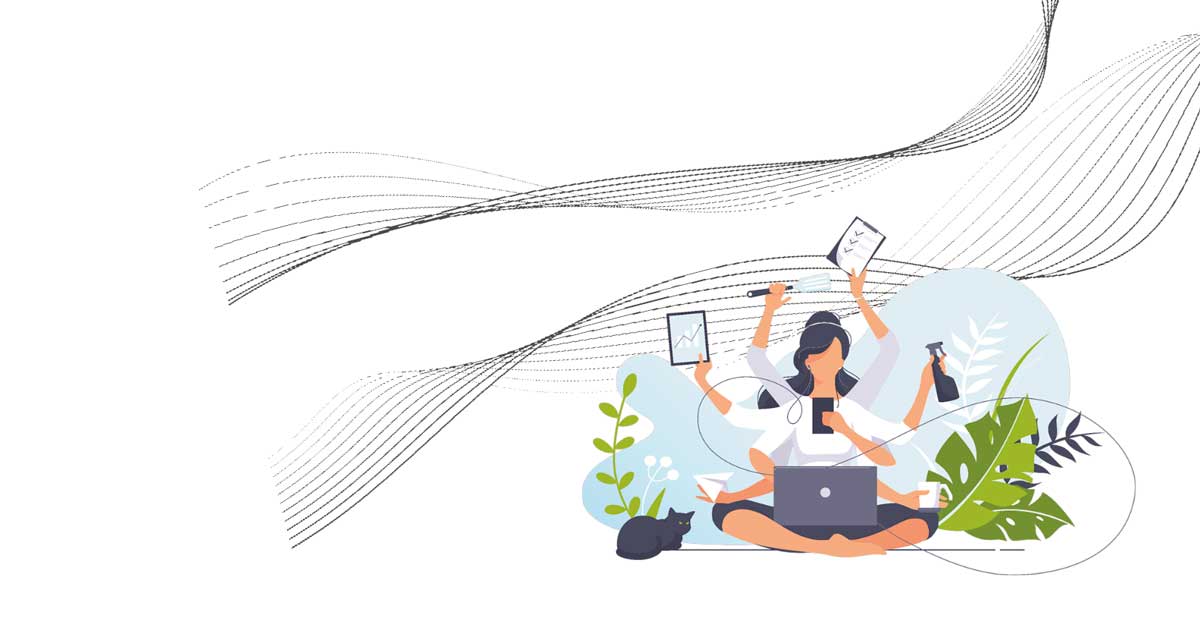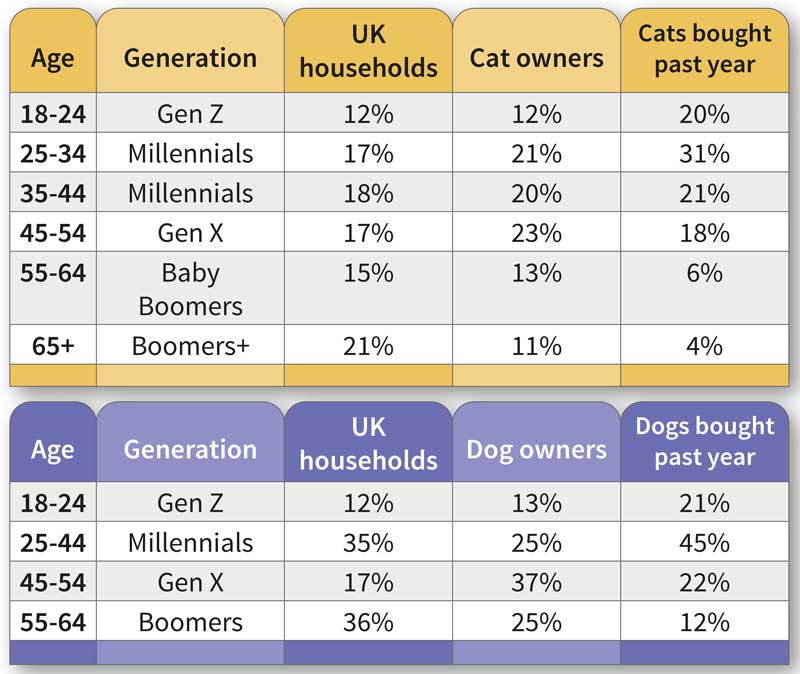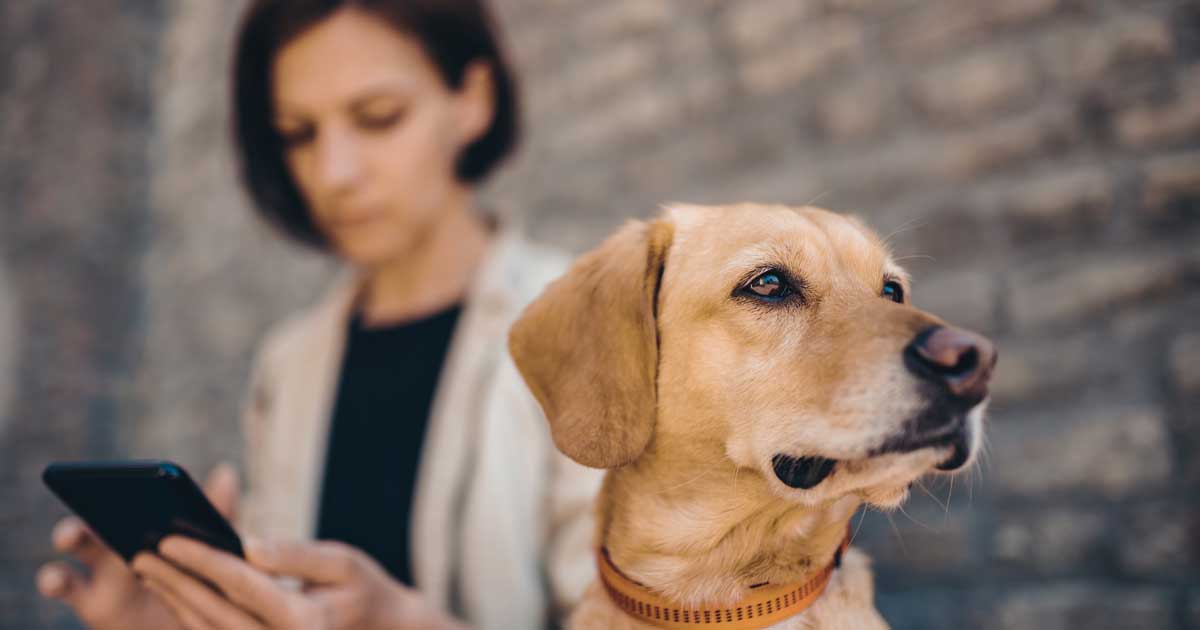24 May 2023
‘Next gen’ owners: are you on their wavelength?
Three-quarters of all cats and two-thirds of all dogs were bought by adults younger than 44 in the past 12 months, meaning the pet-owning baton has well and truly passed to the next generation. With Gen Z and millennials expecting to interact with businesses digitally, vet practices must ensure they are maximising engagement opportunities…

Image: © Svet / iStock and Image: © Sergey Lobodenko / iStock

While high-quality statistics are hard to come by, the evidence seems to suggest that pet owner demographics are shifting. The baby boomers and Gen X are out, and the millennials and Gen Z are in.
The most likely people to have recently bought a pet are adults below the age of 40 (Figure 1). This demographic engages in purchasing decisions quite differently to their forebears, primarily in more technologically enabled ways.
Picking a vet is now heavily tech informed, and these generations will increasingly expect to be able to interact in digital ways with clinics. I for one (as a geriatric millennial), would rather communicate in almost any way other than picking up a phone.
Being able to communicate digitally allows me to fire off a question immediately, while not having to focus solely on an immediate answer. It means I can be watching Netflix, while messaging a business because something has popped into my mind, not minding that I won’t get a response until the following business day, and not missing any key plot twists.
This is quite a different preference to my parents’ generation, for whom that human touch is much more important and picking up the phone is much more natural – once they’ve dug the number out from a dusty Filofax.
A good example is new client registration forms. It can take a good 10 minutes of receptionists’ time to get these done, and it’s a painful experience for all involved, with customers having to spell out words or repeat themselves, while overworked team members try to enter the information correctly into the PMS – all while dealing with slightly frustrated customers.
This sort of data entry is a win-win for customers, because they not only avoid the phone interaction, but they can also use things like auto-complete on their browser to fill in forms much, much faster and with fewer errors. It is also available out-of-hours, of course, and allows the customer to do this sort of administrative task outside of work hours. Tools such as VetBooker allow a full client registration journey, creating a complete client and patient record in the PMS in the same way as a receptionist would.
Online appointment booking is another area of self service the younger generations are more likely to engage in. With similar advantages to new client registration, the loss of control some vets worry about with their diary is likely well worth the advantages.
Tools such as VetBooker or Vetstoria have customisable booking logic, which can ensure the right slots are offered in much the same way as a receptionist would curate available slots. While some PMSs offer online appointment booking, the flexibility and logic in custom tools often far outweigh the simple booking systems offered directly.
Negatives to self service, however, exist. Having appointments booked incorrectly is a concern for both pet owners and clinic staff alike.
That logic layer needs to be “trained” like a member of the reception team to offer the right availability. On top of that, clinical appointment booking is a highly informed decision, and owners often lack the confidence and ability to make the decision. They often are unsure of when to book, where to book, what to book and who to book with, which means they will often still resort to phone calls for anything other than the most routine. Thus, online appointment booking is not a panacea for clinic operational efficiency, but rather one tool that can help reduce a percentage of bookings made through traditional channels.
Asynchronous communications
Asynchronous communication means taking turns to send messages/media/voice notes rather than having a synchronous interaction that requires both parties to be fully available and engaged in the interaction at the same time. The younger generation’s dislike of phone calls is a manifestation of this desire to communicate asynchronously.
The main asynchronous communications tools are already familiar to us all and are the most common apps on millennials’ phones. These are apps such as WhatsApp, Facebook Messenger and Instagram. These highly engaging communication channels allow rich media to be exchanged, as well as text, meaning photos, videos and voice notes can all be used to interact with businesses (and vice versa).
A tool such as Digital Practice can amalgamate all of these into a single dashboard for clinic staff, as well as integrate with the PMS to give huge advantages over simply using the free versions of the tool on a single handset.
Another way to communicate asynchronously is through apps. While apps can be a fantastic experience for some users, they are also often a barrier to interaction, with more than 90% of users reporting frustration when a business requires an app to be downloaded. The younger generations are also more likely to abandon a transaction if they have to download an app (87% of people aged 18 to 24 versus 70% for those above 55). Having to download an app just to ask a question or make a payment can be one step too far for a lot of clients.
However, for clinics prepared to build their own apps with custom user journeys, and excellent integration with the in-clinic workflow and tools, a best-in-class experience can be provided for your most bonded clients.
Payments
As with a lot of millennials, I now regularly leave the house without my wallet. The old “phone, wallet, keys” mantra before heading out is now just “phone, keys”, because your phone can now act as a wallet in most situations.
Offering clients the ability to make payments through their mobile devices can improve payment rates and speed.
This very much ties in with the aforementioned idea of asynchronous communications – being able to send a link to your clients via WhatsApp has a seven-times higher payment rate than by SMS, for example.
Taking payment before owners return to collect pets after a procedure, or even taking pre-payment for consultations or tests, can reduce the stress of the in-person interaction, as well as providing a faster experience for all involved.
The term “phygital” is a slightly ugly combination of physical and digital, but encompasses the hybrid way tech can enable us to work. From pre-consultation questionnaires that can be completed by owners before the consult, through to digital follow-ups, the experience no longer needs to start and end on the physical premises.
We all know pet owners will consult with “Dr Google”, and yet we often try to swim upstream, sometimes even going all the way to producing our own educational content. Unfortunately, this only really helps if we can get the material in front of our clients and tech enables us to do that.
Following up a consultation with a quick WhatsApp message containing a PDF or even short-form video from the clinic, allows the client to digest the information in their own time and to come back to it when they forget. This negates the need for the client to go wild googling, only to come in a week later asking if it matters what particular brand of aromatherapy oil they use to treat that malignant neoplasia.
The ‘sovereign pet owner’
In the blockchain world, there is a concept of the “sovereign individual”. This is someone who has custodianship of their private keys, which in turn gives them access to their digital assets, which may include currencies such as Bitcoin, Ethereum, non-fungible tokens (NFTs), or even Dogecoin for the degenerates among us.
The core concept here, however, is that no middle-man comes between the individual and their asset. If you own the private keys, you can interact with the blockchain directly and use or move those assets freely without any other party being able to intervene.
One can imagine a world where pet information is not siloed on multiple PMSs at different veterinary clinics, along with lab results and referral reports all on different computer systems with no centralised identifier. Instead, the information lives in a decentralised storage solution that the pet owner controls access to through owning the keys.
Access can be granted to individuals or businesses, long term or short term. This might include the primary veterinary clinic/PMS to read and write clinical history data, an OOH emergency provider or even a reference laboratory for a lab report. It would also potentially include allowing a boarding kennel read-only access to the vaccination history, or an insurance provider full access to the clinical history in an emergency.
In this possible future, all information relating to that pet is owned by the pet owner, but managed and interacted with in a decentralised way, secured through the blockchain in an immutable fashion. Data being locked away in different databases doesn’t do animal welfare any benefit, nor does it benefit the pet owners or the veterinary profession.
It’s possibly no surprise that some PMS companies, as well as pet owner apps, have recently managed to raise millions of pounds from venture capital firms. It isn’t because their core market is that huge – vets are notoriously averse to paying lots of money for software – but because they want to control the data for its potential value, which could dwarf that of the software itself.
In this alternative future to the one I just presented, pet data becomes more siloed and the ownership more centralised, and the value of that data flows to corporate entities. Sometimes shiny new apps can actually be a Trojan horse – once it is in your clinic and has access to all that data, the company can ingest it, aggregate it, and sell it on to the highest bidder.
By allowing pet owners to be custodians of their data, and decentralising the ownership, an opportunity exists for the veterinary profession to avoid this and instead lead the way for other industries to follow.


